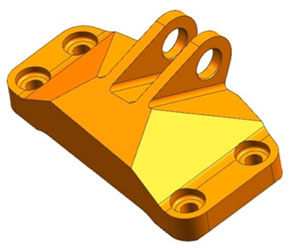I’m politically on the liberal, not the libertarian side, but I’ve come to respect the libertarian Mercatus Center, in large part because of the great work Jerry Brito has done there on governmental transparency.
As part of my preparation to moderate a panel on security and privacy at the IoT Summit on October 1st in DC, I just read a great paper on the issue by Mercatus’ Adam Thierer.
In comments submitted to the FTC for its November workshop on these issues titled “Privacy and Security Implications of the Internet of Things,” Thierer says “whoa” to those who would have the FTC and others quickly impose regulations on the IoT in the name of protecting privacy and security.
Opposing pre-emptive, “precautionary” regulations, he instead argues for holding back:
“…. an “Anti-Precautionary Principle” is the better default here and would generally hold that:
“1. society is better off when technological innovation is not preemptively restricted;
“2. accusations of harm and calls for policy responses should not be premised on hypothetical worst-case scenarios; an
“3. remedies to actual harms should be narrowly tailored so that beneficial uses of technology are not derailed.”
He reminds us that, when introduced, such everyday technologies as the phone (you know, the old on-the-wall kind..) and photography were opposed by many as invasions of privacy, but social norms quickly adapted to embrace them. He quotes Larry Downes, who has written, “After the initial panic, we almost always embrace the service that once violated our visceral sense of privacy.”
Rather than imposing limits in advance, Thierer argues for a trial-and-error approach to avoid unnecessary limits to experimentation — including learning from mistakes.
He points out that social norms often emerge that can substitute for regulations to govern acceptable use of the new technology.
In conclusion, Thierer reminds us that there are already a wide range of laws and regulations on the book that, by extension, could apply to some of the recent IoT outrages:
“… many federal and state laws already exist that could address perceived harms in this context. Property law already governs trespass, and new court rulings may well expand the body of such law to encompass trespass by focusing on actual cases and controversies, not merely imaginary hypotheticals. State ‘peeping Tom’ laws already prohibit spying into individual homes. Privacy torts—including the tort of intrusion upon seclusion—may also evolve in response to technological change and provide more avenues of recourse to plaintiffs seeking to protect their privacy rights.”
Along the lines of my continuing screed that IoT manufacturers had better take action immediately to tighten their own privacy and security precautions, Thierer isn’t letting them off the hook:
“The public will also expect the developers of IoT technologies to offer helpful tools and educational methods for controlling improper usages. This may include ‘privacy-by-design’ mechanisms that allow the user to limit or intentionally cripple certain data collection features in their devices. ‘Only by developing solutions that are clearly respectful of people’s privacy, and devoting an adequate level of resources for disseminating and explaining the technology to the mass public’ can industry expect to achieve widespread adoption of IoT technologies.”
So get cracking, you lazy IoT developers (yes, you smirking over there in the corner…) who think that security and privacy are someone else’s business: if you don’t act, regulators may step in, and stiffle innovation in the name of consumer protection. You’ll have no one to blame but yourselves.
It’s a good read — hope you’ll check it out!



